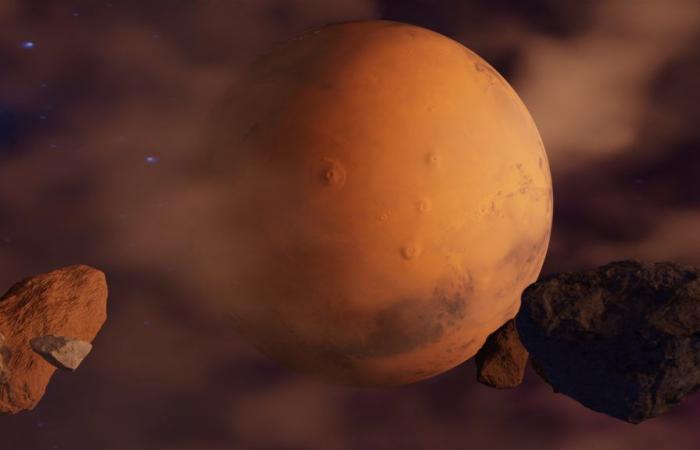In 2022, NASA achieved a technological feat by sending the DART spacecraft to collide with the asteroid Dimorphos, the size of the Great Pyramid of Giza. This mission aimed to demonstrate the possibility of modifying the trajectory of space objects, a crucial step forward in protecting our planet against potential threats from asteroids. Successfully, DART had not only deflected Dimorphos, but also knocked several boulders from the asteroid into space. And according to calculations, some could hit Mars.
A mission full of lessons
The mission DART of NASA had been successfully launched in 2022 to study the asteroid Dimorphos, the companion of Didymos, in a binary asteroid system. Smaller than Didymos, Dimorphos was chosen as a target because it offered a unique opportunity to study an asteroid’s response to a high-speed collision. The impact planned with the DART space probe was intended to deviate its orbitthe aim being to test this approach in the event of a real threat to the Earth.
Besides the main objective of orbit deviation, the mission also aimed to study the mechanical effects of impact. Radar observations and mutual occultations then made it possible to identify a long tail of dust resembling a comet. Initially, this dust made it difficult to clearly observe the results of the impact. However, over time the debris had dispersed, allowing the Hubble Space Telescope to identify around forty distinct rocks which move with the Didymos/Dimorphos system. Some of these rocks, which measure between four and seven meters in diameter, could escape the gravitational pull of the system.
Mars could be hit
More recently, numerical simulations have predicted that these objects will pose no threat to Earth during this period. On the other hand, Mars could face impact risks. Although their average speed is modest, these rocks would in fact now be on trajectories which will lead them to cross the orbit of Mars at several times over the next 20,000 years.
According to estimates, these impacts could occur approximately twice every 6,000 years and twice more every 15,000 years in the future. Although most rocks are expected to fragment upon entering the Martian atmosphere, some could generate small impact craters of approximately 200 to 300 meters in diameter if they manage to reach the surface.
This mission demonstrated not only the ability to deflect an asteroid, but also to study the unintended consequences of such impacts, such as the ejection of rocks into space. While Dimorphos has been diverted from its trajectory, some ejected fragments are now on trajectories that could intersect that of Mars in the millennia to come. These results pave the way for a better understanding of the risks posed by asteroids, not only to Earth, but also to other planets in our solar system, and highlight the importance of continued space exploration and monitoring.






